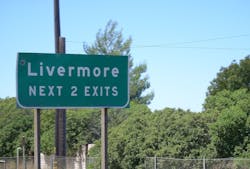Osram has upped its stake in the germicidal ultraviolet (GUV) LED business, acquiring a 20% share in Bolb Inc., a California UV-C chip company that is advancing energy efficiency in the technology.
Livermore-based Bolb said in a press release that Osram’s venture capital arm, Fluxunit, led a $16 million Series A investment in the seven-year-old company. Bolb did not break down the individual company amounts, but Munich-based Osram said in a separate release that the move gives it “around 20%” of Bolb.
The backing comes about two months after Osram Opto Semiconductors (OS) unit announced a portfolio of UV-C chips of its own — the Oslon UV3636 — emitting at 275 nm and including versions with varying power outputs.
Osram is also boosting production of UV-C lamps using conventional mercury-vapor technology.
UV-C is ultraviolet radiation ranging from 100‒280 nm. It has been proven both in LED form and in mercury vapor form to deactivate SARS-CoV-2, the coronavirus that causes COVID-19. Osram’s mercury UV-C products include the AirZing UV-Compact portable canisters for air disinfection in home, offices, cars, and elsewhere.
As Osram noted when it introduced the Oslon line, UV-C LED’s comparative small size and packaging lends the technology to more direct contact with water or a surface compared to conventional tubes. LEDs are also easier to shield, which is an important safety advantage given that UV-C is hazardous when in direct contact with skin or eyes.
But UV-C LEDs are relatively inefficient when compared with other LEDs for general illumination, which is one reason that some mercury tube vendors such as Signify say they are sticking with conventional technology for now.
Bolb is tackling the efficiency challenge.
“UV-C LED technology has the potential to consume significantly less energy,” Osram said. “The collaboration between Osram and Bolb promises to overcome this technological hurdle. Thanks to a unique technological building block for UV-C LEDs, Bolb is already succeeding in achieving outstanding efficiency values that are far ahead of other products available on the market.”
Bolb describes its technology as “a proprietary epitaxial platform” that enables “the world’s only fully transparent UV-C LED epitaxy stack.”
Mike Krames, president of semiconductor consultant Arkesso, suggested in LEDs Magazine last summer that UV-C LEDs made by Bolb, and also by RIKEN/Panasonic, could potentially yield photon conversion efficiencies by 2030 of over 50%, compared to 5‒10% for other UV-C LEDs.
Bolb claims to be a leader in UV-C LED power output with what it described in its press release as “up to 200 mW of performance per emitter.”
“Bolb’s proprietary technology and platform have produced, by far, the world’s highest-efficiency UV-C LEDs,” said Jens Milnikel, Osram OS CEO for the illumination product line. “Our Series A investment will allow Bolb to significantly expand its business and fund additional engineering activities to advance its product roadmap, which will allow Osram to foster its technology portfolio in this growing field of germicidal solid-state disinfection.”
Bolb cited Osram’s vast experience in general LED development and production.
“Osram is an ideal partner as we start to scale our business globally,” said Bolb co-founder, chairman, and chief technology officer Jerry Zhang. “We’re excited to have a partner on board that provides us not only capital, but also vast industrialization experience.”
Bolb co-founder and CEO Ling Zhou added that partnership should help Bolb deliver “ever improving performance and cost of ownership.”
Osram’s 20% stake in Bolb is consistent with Osram’s determination to focus more than ever on chip-level operations, now that it has been acquired by Austrian sensor company ams. Osram recently began what could be the start of a divestiture of other segments, possibly including connected lighting.
“Osram already has various UV-C light solutions for disinfection, including LED and traditional technologies,” said outgoing Osram CEO Olaf Berlien. “The strategic investment in Bolb strengthens our know-how in the UV-C LED field and gives Osram a leading position in the market for disinfection with non-visible light."
Bolb said the $16M funding round also included Southeast Asian UVC-Tech Group and Walden International. “The financing will be used to fund expansion of Bolb’s manufacturing capacity, technology roadmap, and global sales,” Bolb said.
The roadmap would include continuing efficiency strides.
UV-C LED vendors in general have been working their wares into products with the coronavirus in their crosshairs.
Crystal IS, for example, is providing 265-nm LEDs for ceiling luminaires made by Healthe Inc, which has outfitted the Miami Dolphins locker room. Crystal is also providing 265-nm chips to Big Ass Fans. Company president and CEO Larry Felton told LEDs late last year that the efficiency and price hurdles described by Signify have been falling.
Osram launched its Fluxunit venture capital arm in 2016. Its investments have included a 2019 stake in driverless-car AI company Recogni, plus stakes in medical imaging and horticultural lighting firms, among others.
MARK HALPER is a contributing editor for LEDs Magazine, and an energy, technology, and business journalist ([email protected]).
*Updated Feb. 26, 2021 for correction to the photon efficiency roadmap/forecast.
For up-to-the-minute LED and SSL updates, why not follow us on Twitter? You’ll find curated content and commentary, as well as information on industry events, webcasts, and surveys on our LinkedIn Company Page and our Facebook page.





